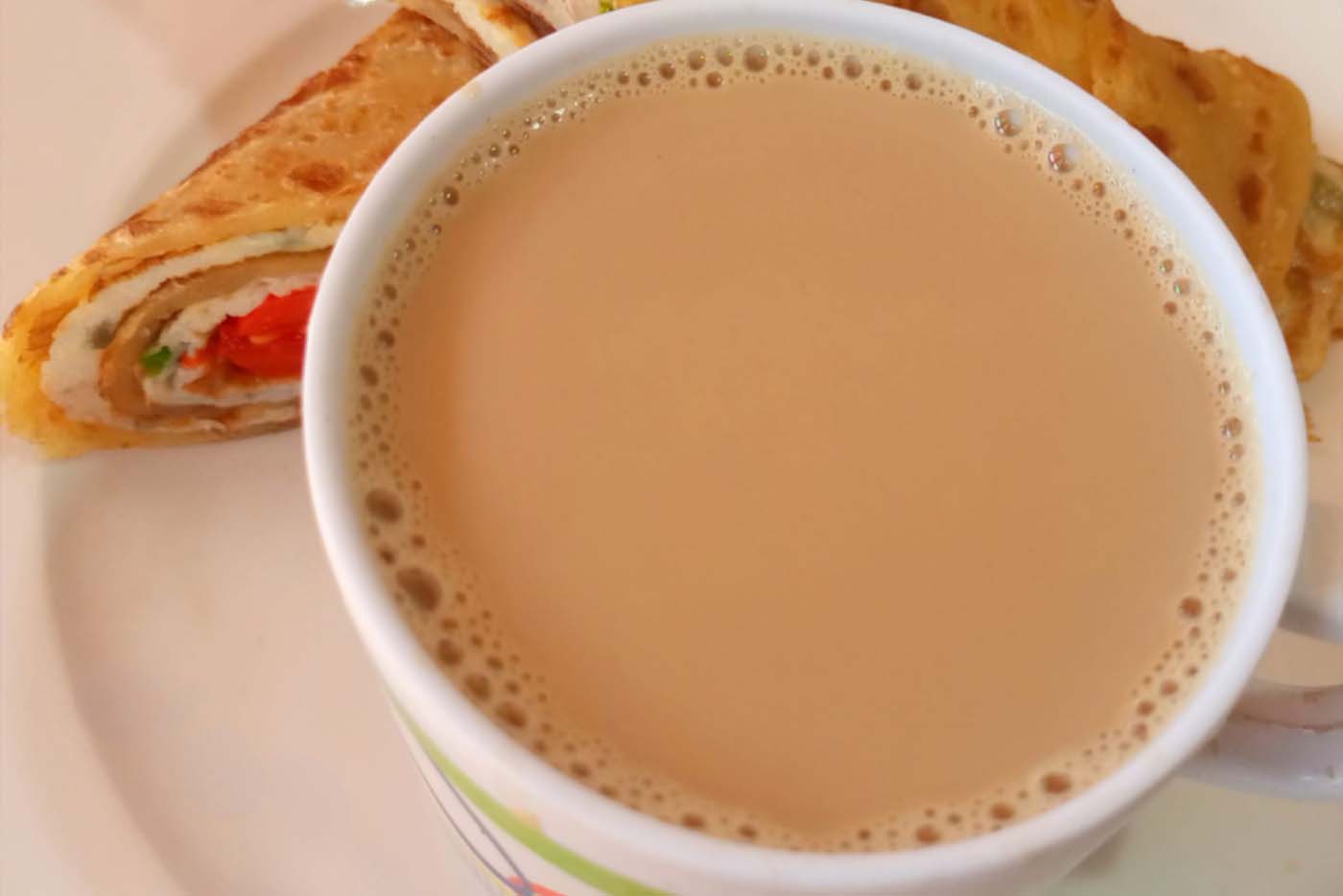
In this article, we will take a deep dive into the most popular foods in Uganda. Uganda is known for its diverse culture, and the food is no exception. The country’s cuisine is influenced by the different regions, tribes, and religions. The dishes are usually simple and made with fresh, local ingredients.
In this article, we will explore the most Popular Traditional Foods in Uganda, including their history, preparation, and cultural significance.
READ THIS NEXT: 15 most popular Ugandan street foods
1. Luwombo

Luwombo is one of the most popular traditional foods in Uganda and is popular throughout the country. The dish is made from steamed meat, usually chicken or beef, that has been marinated in a variety of spices and wrapped in banana leaves. The banana leaves help to keep the meat moist and infuse it with a delicate, smoky flavor.
The dish is often prepared for special occasions and is a favorite among families during the holidays. Luwombo is typically served with a side of matoke, a popular Ugandan dish made from steamed green bananas. The combination of the two dishes is a classic Ugandan meal and is sure to please any food lover. The preparation of luwombo is a labor-intensive process, but the end result is well worth the effort. The dish is a testament to the rich cultural heritage of Uganda and is a must-try for anyone visiting the country.2. Chapati
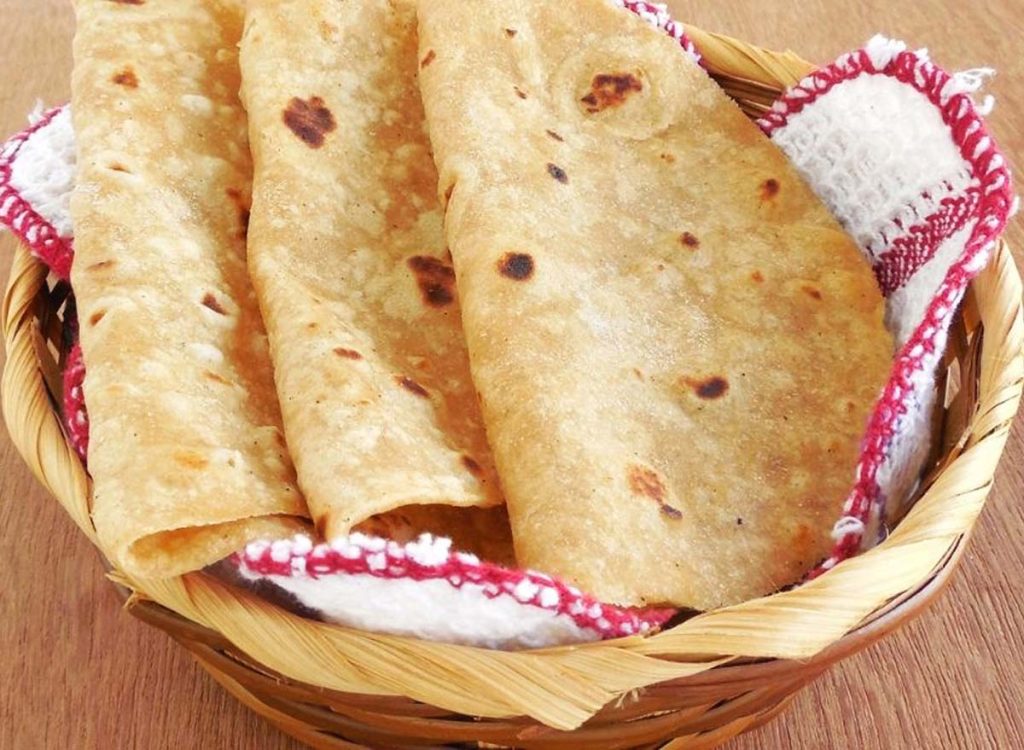
Chapati is a popular flatbread that is widely consumed in Uganda, East Africa, and parts of South Asia. It is a simple yet versatile bread made from wheat flour, water, and salt. The dough is kneaded until it becomes smooth and elastic, then divided into small portions which are rolled out into thin, round discs. The chapatis are then cooked on a hot pan until they puff up and form light brown spots.
Chapatis can be served with a variety of dishes, such as curries, stews, or even eaten plain with tea or coffee. In Uganda, chapatis are often served with stews made from beans, lentils, or meat, or with a side of vegetables. It is also a favorite among street food vendors, who sell it with a variety of fillings. They are one of the most popular traditional Foods in Uganda and affordable meal that can be enjoyed by people of all socio-economic backgrounds.
Chapatis are also an important cultural dish, often served at special events such as weddings, festivals, and religious celebrations. They are a good source of carbohydrates, dietary fiber, and some vitamins and minerals, making them a nutritious addition to any diet.
TRY OUT THE RECIPE: How to make soft Chapati – A Step-by-Step Guide
3. Ugandan Rolex
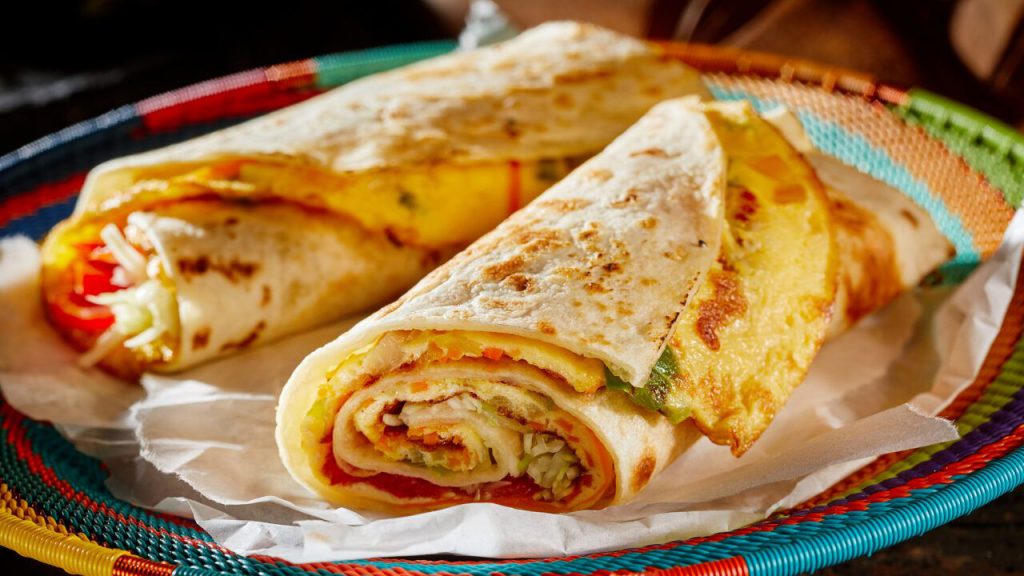
Ugandan Rolex is one of the most popular street foods in Uganda that is enjoyed by locals and visitors alike. It is a simple dish made from a rolled chapati filled with eggs and vegetables, typically tomatoes, onions, and cabbage.
The chapati is fried on a hot pan with a little bit of oil, then an egg is cracked on top and mixed with the vegetables. The mixture is then rolled up like a burrito, creating the signature “rolex” shape. Ugandan Rolex is usually served with a spicy sauce, such as tomato or chili sauce, for added flavor.
It is an affordable and filling meal that is commonly sold by street vendors and is a popular breakfast or lunch option. Ugandan Rolex has become a cultural icon in Uganda and is celebrated at the annual Kampala Rolex Festival, which showcases different varieties of the dish.
TRY OUT THE RECIPE: How to make a Ugandan Rolex!
4. Matoke/Matooke

Matoke locally referred to as matooke is a traditional dish that is highly cherished in Uganda. It is made from green bananas(not plantain) that are cooked until they are soft, then mashed with a fork or a wooden spoon. Matoke has a unique taste and texture that sets it apart from other banana dishes. The bananas used for matoke are a different variety than the ones typically eaten as fruit. They are firmer and less sweet, making them perfect for cooking.
Matoke is often served with stews, meat dishes, or vegetables. It is one of the most popular staple foods in Uganda and is eaten by people from all walks of life. The dish has cultural significance and is often served at special events such as weddings, funerals, and other celebrations. Matoke is a nutritious and filling dish that provides a good source of carbohydrates and dietary fiber. It is also rich in vitamins and minerals, making it a healthy addition to any diet.
5. Posho/Ugali
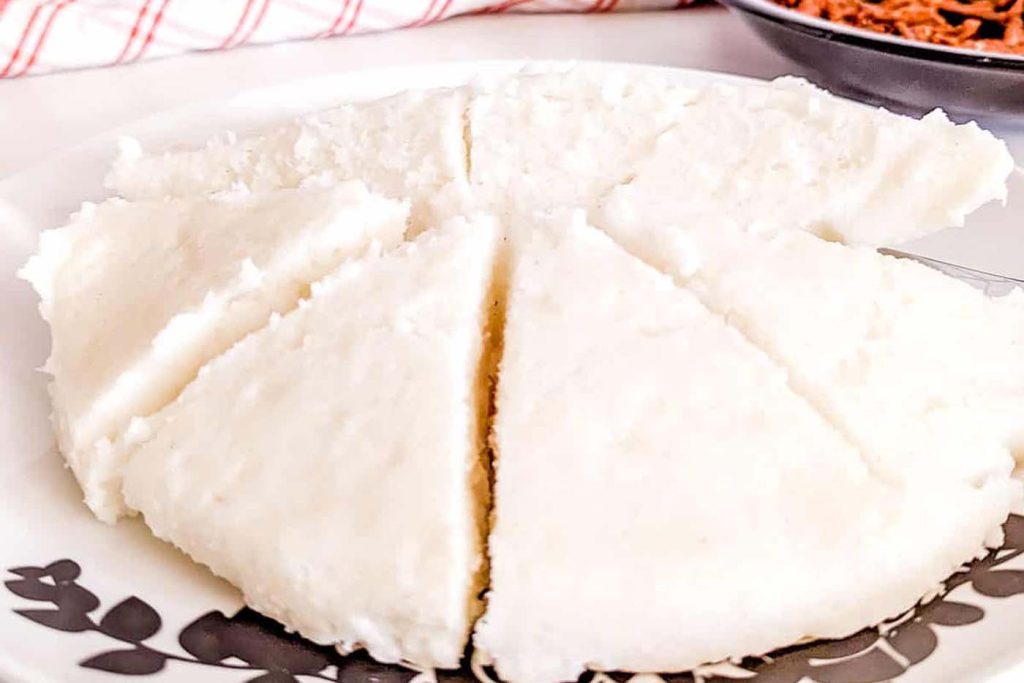
Posho, also known as ugali in Kenya, and Tanzania and “sadza” in Zimbabwe, is one of the most popular staple foods in Uganda, and other parts of East Africa. It is made from maize flour and water and is cooked by stirring the mixture over low heat until it forms a thick, dough-like consistency.
Posho is usually served with stews, vegetables, or meat dishes, and is often eaten by hand. It has a neutral taste that complements the flavors of the accompanying dishes. Posho is an affordable and filling meal that is consumed by people of all socio-economic backgrounds. It is also an important cultural dish in East Africa, often served at special events such as weddings, funerals, and other celebrations.
Posho is a good source of carbohydrates, dietary fiber, and some vitamins and minerals, making it a nutritious addition to any diet. Overall, posho is a beloved and essential part of East African cuisine and culture.
6. Eshabwe
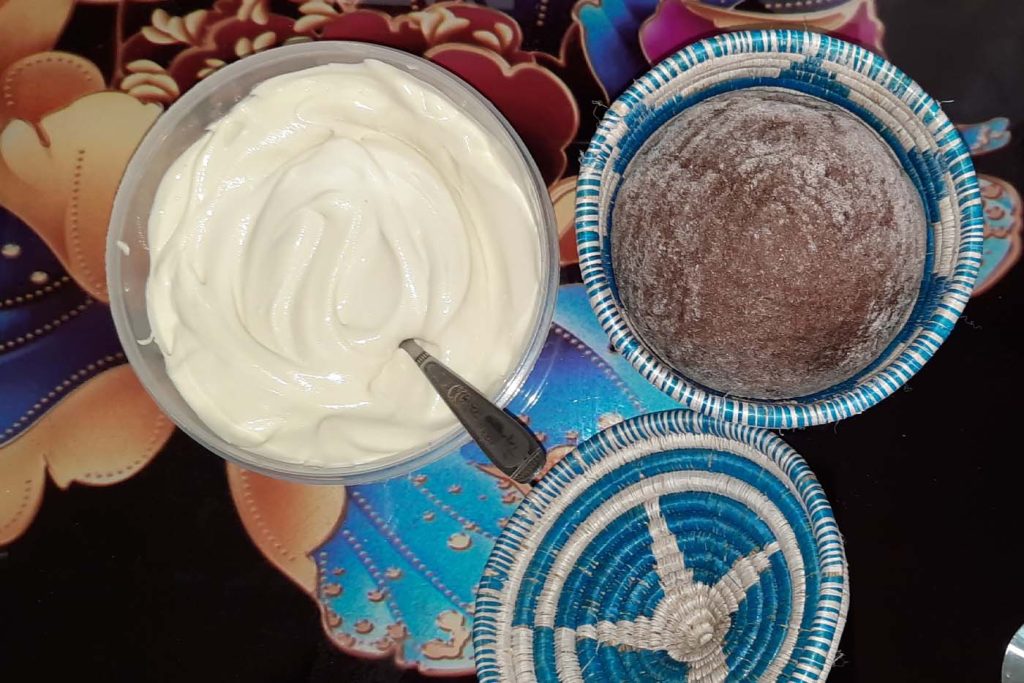
Eshabwe, also known as ghee sauce, is a type of clarified butter that originated in Ankole, Uganda. This Ugandan traditional food is typically prepared for special occasions and ceremonies, such as traditional marriage ceremonies in the Ankole community. During these ceremonies, four people, including the groom, his father, and the paternal aunt and maternal uncle of the bride, taste the dish from a clay bowl with a lid known as an orwabya.
In the past, Eshabwe was made exclusively by older women who had to work in silence, as it was believed that talking would negatively impact the quality of the dish. However, nowadays, Eshabwe is enjoyed by everyone and is served as a condiment with main course meals such as karo (millet bread), potatoes, matooke, and beans. Eshabwe has a rich, buttery taste and is a beloved part of Ugandan cuisine. While it has a strong cultural significance in Ankole, Eshabwe can now be found and enjoyed throughout Uganda as a delicious and versatile condiment.
7. Malewa
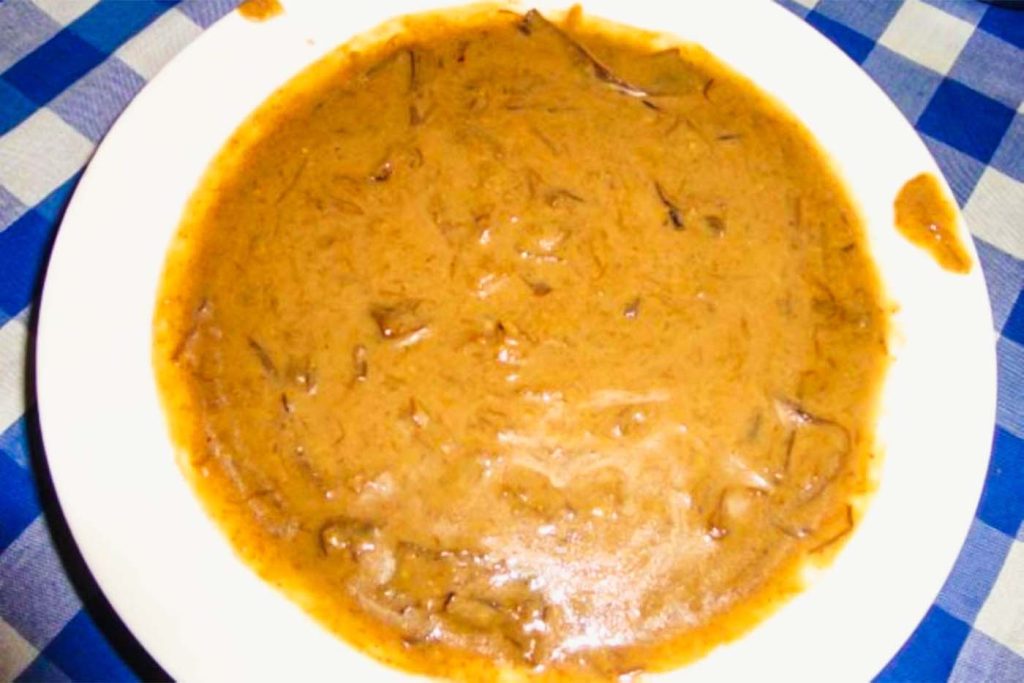
Malewa is a delicacy that is predominantly found in Uganda’s Bugisu sub-region, around the Mount Elgon area in the eastern part of the country. This dish is made from smoke-dried bamboo shoots that are harvested from wild bamboo plants in the area. Malewa plays a significant role in various cultural ceremonies, such as weddings and male circumcisions, in this part of Uganda.
Malewa can be eaten in its raw, smoked form, or prepared by steaming or boiling, similar to beef jerky. Alternatively, it can be cooked into a sauce by adding sesame seeds or ground nuts. This flavorful sauce is typically served with carbohydrate-rich sides such as matooke and posho, which is another popular traditional Ugandan dish. Malewa’s unique taste and cultural significance have made it a beloved part of Ugandan cuisine, and it is worth trying for anyone visiting the region.
8. Malakwang
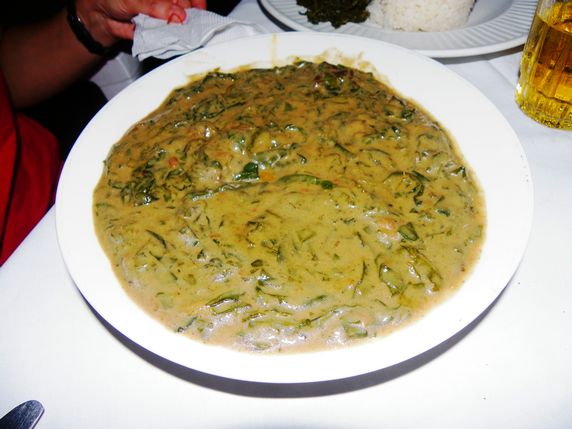
Malakang is a well-known Ugandan traditional dish that originated from the northern part of Uganda. It is made using leafy vegetables(malakwang plant) and odi, a paste made from peanuts and sesame seeds. The dish was mostly consumed during times of drought and food scarcity.
However, it has become a popular meal in many parts of Uganda and is enjoyed by many locals. The dish is typically served with either millet bread or sweet potatoes. Malakang is a nutritious and flavorful dish that is easy to prepare and can be enjoyed by people of all ages.
TRY OUT THE RECIPE: How to make Malakwang sauce with sweet Potatoes
9. Boo
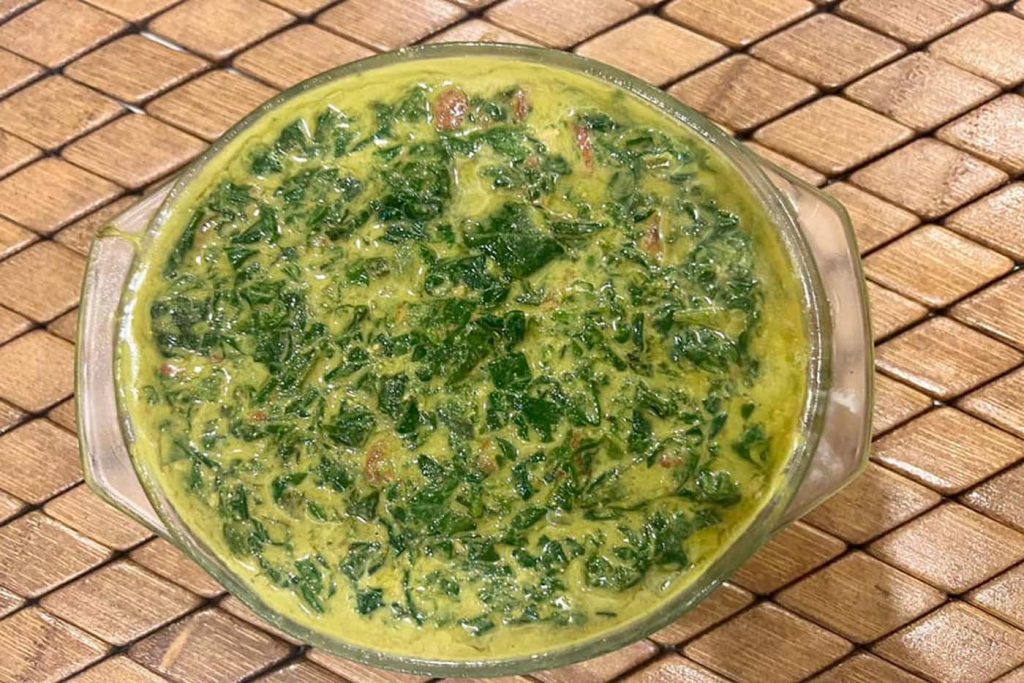
The boo plant, also known as cowpea plant or egobe in Luganda, is the key ingredient in a beloved Ugandan traditional dish from the northern region of the country. The dish is a regional favorite and is often served at weddings, as it is believed to bring good luck in marriage. The boo is combined with okra, a paste made from sesame seeds and peanuts called odi, and other ingredients to create a flavorful and nutritious dish.
Originally, the dish was mostly prepared by women as a source of food while the men were away on hunting expeditions. However, today boo is widely eaten and can be found in restaurants serving local cuisine and in homes all over the country, as it is not only delicious but also easy to prepare.
10. Nsenene(Grasshoppers)
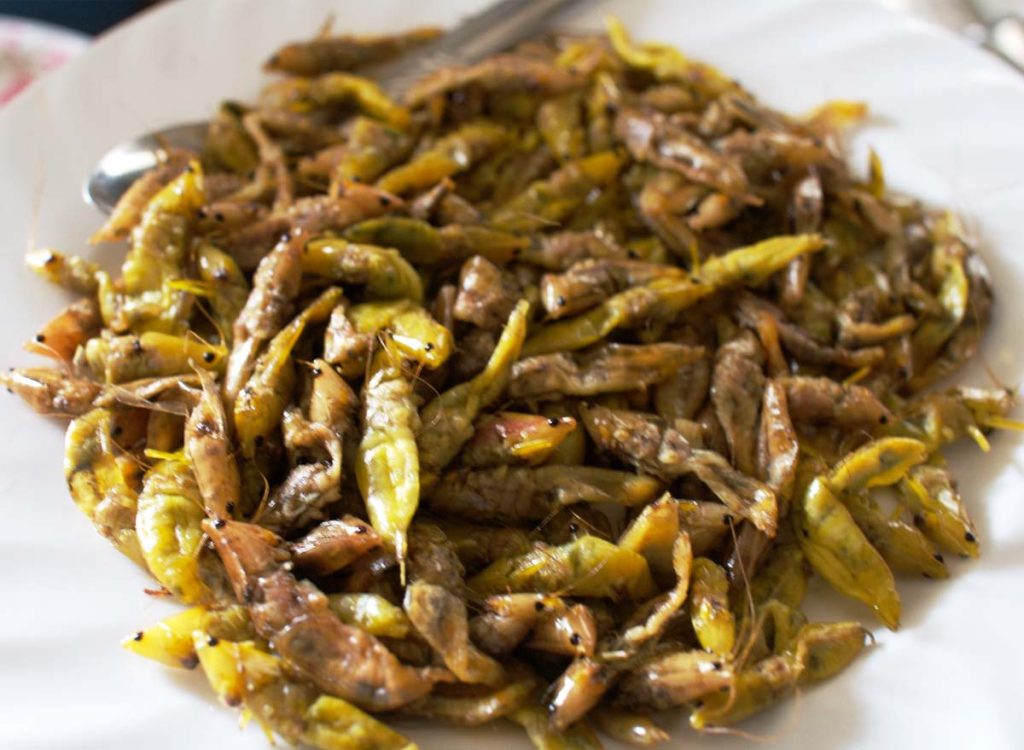
In Uganda, Grasshoppers, also known as Nsenene, is a popular and unique delicacy enjoyed by many people, particularly during the rainy season. These insects are usually found in abundance in November and April and are sold alongside other market products such as rice, tomatoes, and nswaa (white ants or termites).
To prepare the Nsenene, the grasshoppers are first cleaned, and their wings and legs are removed. They are then cooked in their natural oils, along with small slices of carrots, onions, and green pepper, giving the dish a mouthwatering aroma and flavor. Nsenene are not only a delicious snack, but they are also a significant source of income for many Ugandans who sell them in markets or harvest them from the wild.
11. Nswaa(White ants)
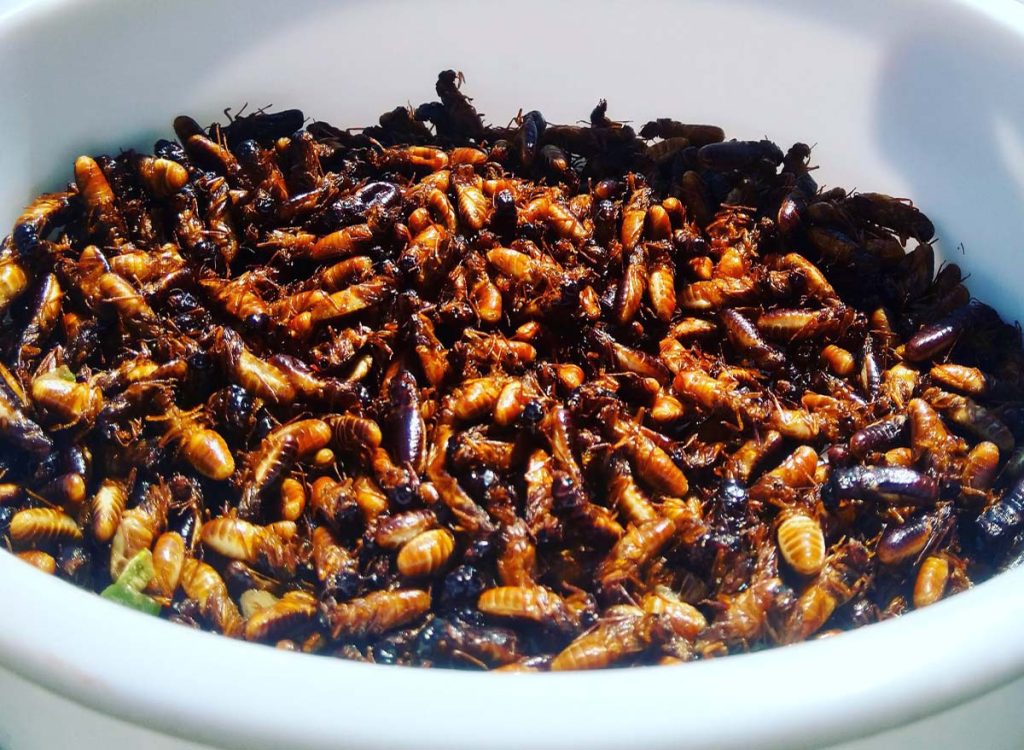
White ants are a highly valued delicacy in Uganda, especially during the rainy season when they are abundant. Like ensenene, they are a popular snack. The wings are removed and the ants are usually roasted or fried with salt and spices. This traditional Ugandan dish is nutrient-dense, with high protein content.
White ants are commonly sold in street food stalls and can also be found on some restaurant menus. They are enjoyed by both children and adults who appreciate them as a unique and exquisite culinary treat.
12. Groundnut Sauce
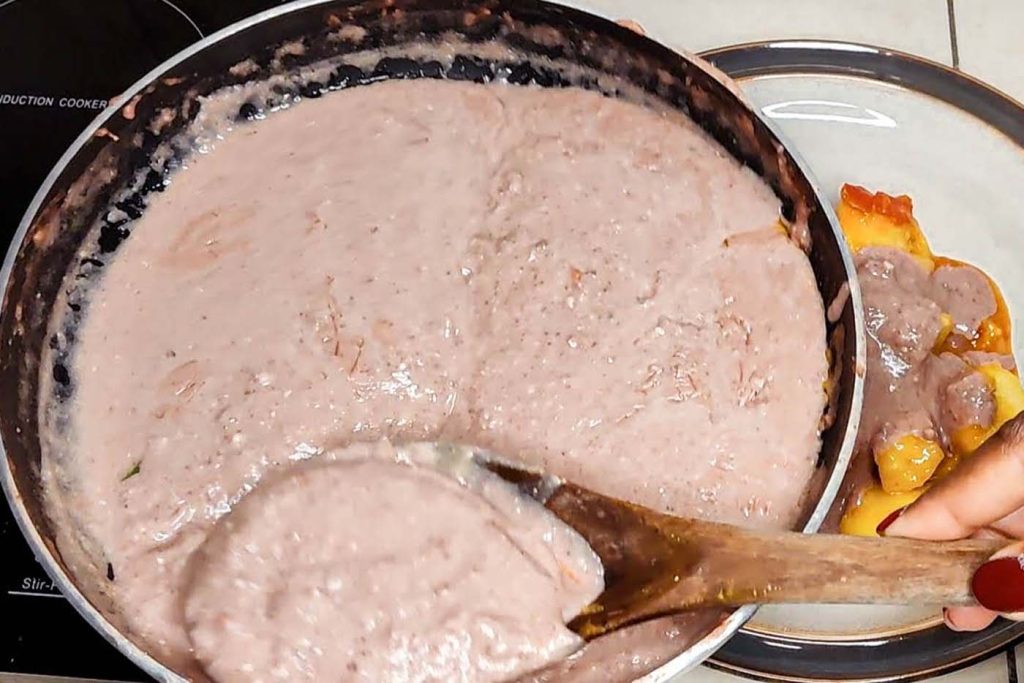
Groundnut sauce is a beloved and classic dish that has become a staple in Ugandan traditional food, as well as in other countries across the region. The dish is made from groundnuts, also known as peanuts, which are roasted and then ground into a paste. The paste is then slowly cooked with a variety of flavorful ingredients, such as tomatoes, onions, garlic, and spices, to create a rich and creamy sauce.
One of the great things about groundnut sauce is its versatility. It can be served plain as a side dish, or as a base for a more substantial meal with meat, matoke, and vegetables. The sauce is often paired with traditional Ugandan dishes such as posho, chapatti, and rice.
TRY OUT THE RECIPE: How to cook Groundnut Sauce with Posho(ugali) and Matooke
13. Nyoi
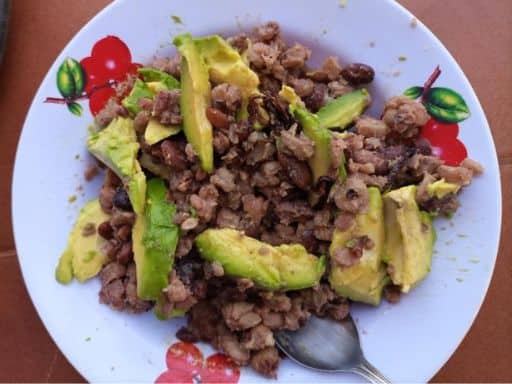
Nyoi is a popular and traditional breakfast dish that can be found in the northern region of Uganda. This nutritious dish is made up of boiled maize kernels and beans, which are slowly cooked together to create a hearty meal. To enhance the flavor, some people choose to fry the maize and bean mixture and then top it off with fried onions for an extra burst of savory goodness.
Nyoi is not only delicious but also provides an excellent source of energy to start your day. The combination of maize and beans provides a good amount of protein and fiber, which can help you feel fuller for longer periods of time. This dish is perfect for anyone looking for a filling breakfast option.
14. Katogo

Katogo is a beloved Ugandan traditional dish that originated in Buganda and Western Uganda. It is a hearty and filling meal made by boiling matooke (bananas) and serving it with beans, meat, and vegetables. Despite its reputation as a “poor man’s meal,” Katogo has evolved over time to become a popular staple food in Ugandan households and restaurants.
The dish’s original ingredients were diced cassava and beans, but over time, it has evolved to include offals, groundnuts, and other fresh sauces. Wealthier Ugandans introduced matooke as a substitute for cassava, resulting in various versions of katogo using different sauces and ingredients. The combination of offals and matooke is a popular variant that has become a cultural favorite.
Katogo’s popularity has spread throughout Uganda, and it is now widely enjoyed across the country. Its many variations make it a versatile dish that can be customized to suit different tastes and preferences.
15. Kalo (Millet bread)
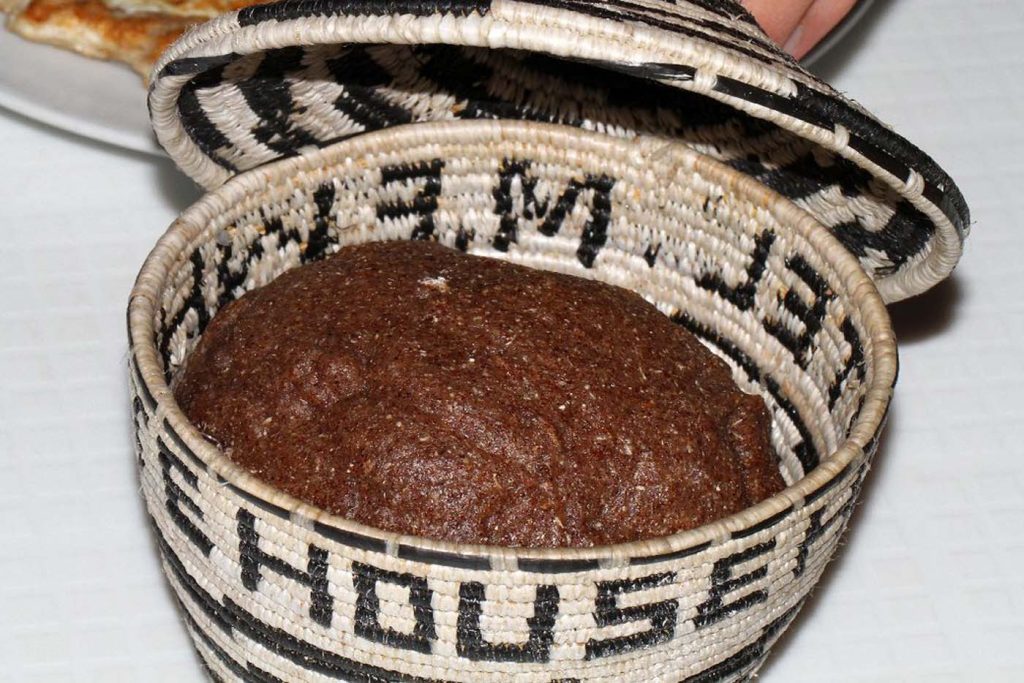
Kalo is one of the most popular traditional foods in Uganda that is mainly found in the northern, eastern, and western regions of the country. It is commonly referred to as “Kalo” or “akaro” and is made from a mixture of millet flour and cassava. The proportions of each ingredient can vary depending on the desired texture and taste. Kalo is prepared by mixing the millet flour and cassava flour with boiling water until a thick paste is formed.
The dish is often served with various sauces such as groundnut, beans, vegetable sauce, fish, and meat. Additionally, in western Uganda, Kalo is often served with Eshabwe, a delicious ghee sauce that is highly sought after.
In some Ugandan cultures, such as the Tooro kingdom in western Uganda, Kalo is considered a must-have dish during traditional ceremonies such as child naming, visitations, and marriage.
16. Firinda
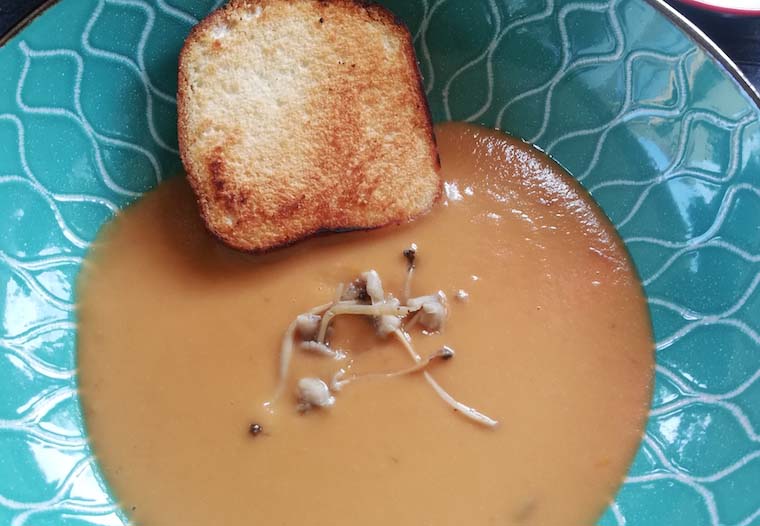
Firinda is a cherished and flavorful Ugandan traditional dish that originates from the Western region of Uganda, particularly among the Batooro and Banyoro tribes. It is a delicious meal made by soaking beans and peeling off their skin, after which the beans are boiled and mashed into a thick porridge-like paste.
To enhance the taste, ghee, salt, and various ingredients like tomatoes, onions, smoked meat, or vegetables like greens and eggplants are added. The dish is often paired with akaro, a mixture of mingled millet and cassava flour, or matooke, a type of green banana. Firinda is not only a dish but also a symbol of hospitality usually served during special occasions like naming ceremonies, weddings, or hosting visitors.
17. Kikomando
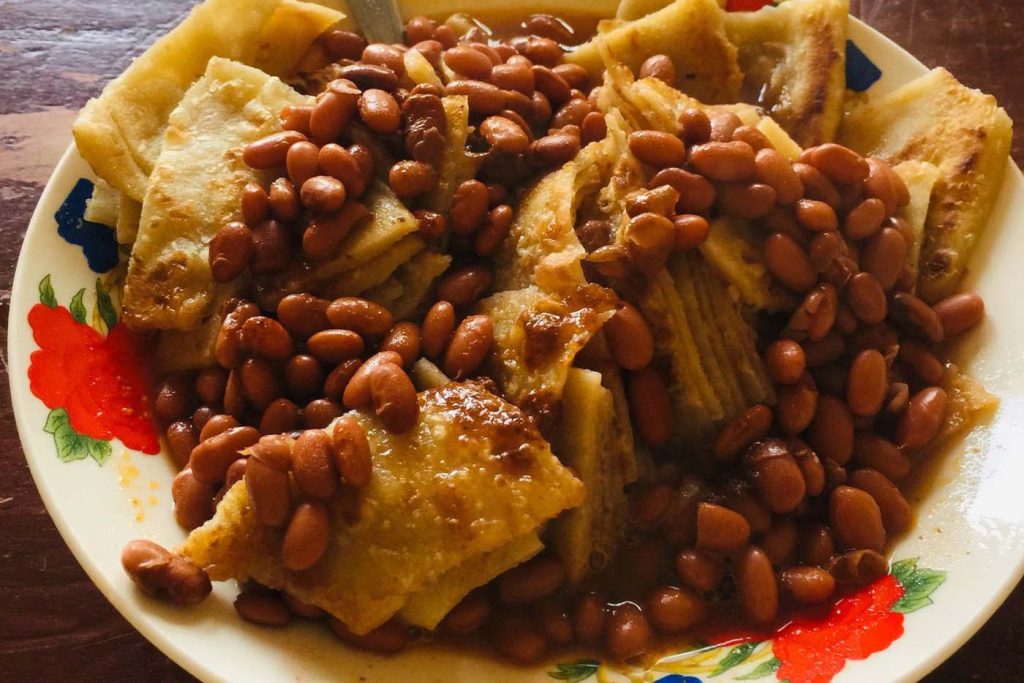
“Kikomando” is a famous Ugandan traditional dish made with sliced chapatti and beans. This popular food choice is quick and easy to prepare, and it can be found at street food stalls and restaurants across Uganda. Kikomando is affordable, making it a popular choice for budget-conscious people.
However, this dish can be made more satisfying by customizing it with various toppings. For instance, one can add diced tomatoes, onions, shredded cabbage, spicy chili peppers, avocado, and meat stew to make it a more filling and complete meal. Kikomando is not only delicious but also a convenient and nutritious option for people on the go.
18. Chaloko
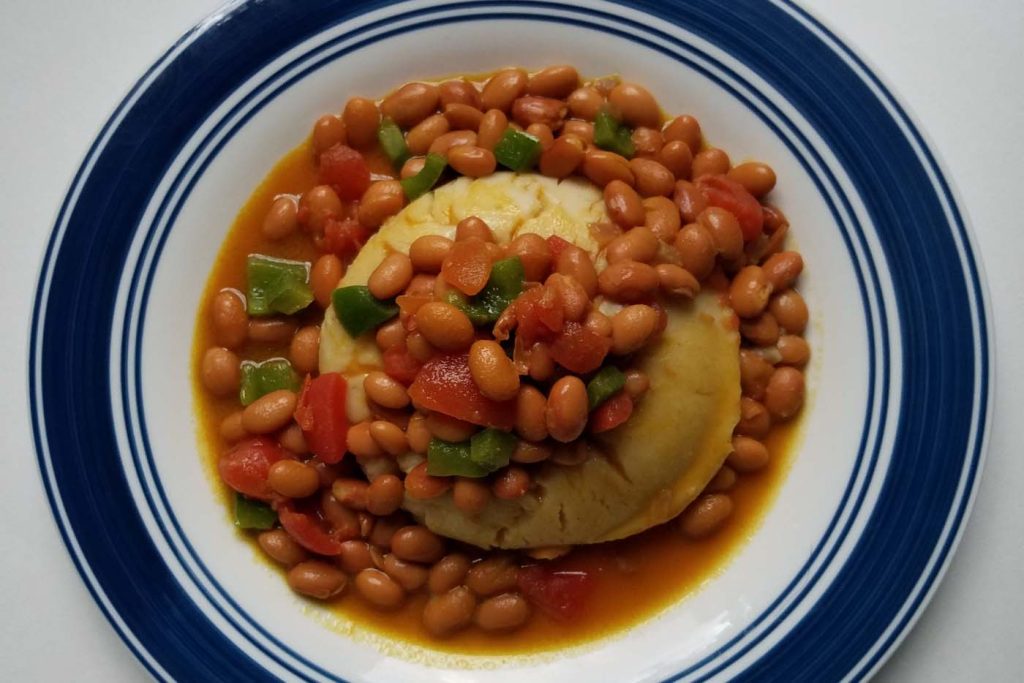
Chaloko is a highly nutritious and protein-rich dish that is widely popular across Uganda. It is made using either dried or fresh pinto beans and comes in various different variations, depending on the region and personal preferences. Some of the most common additions to this Ugandan traditional dish include a variety of spices, vegetables, and leafy greens such as Amaranth (Dodo), onions, tomatoes, green peppers, meats, or fish.
Traditionally, Chaloko is served with “Posho / Ugali”, a thick cornmeal paste that is a staple food in many African countries, but it can also be enjoyed with other popular Ugandan dishes. This versatile dish can be eaten at any time of the day, whether it’s breakfast, lunch, or even as a snack.
Due to its high protein content, Chaloko is considered an important part of a healthy and balanced diet. It is also a great option for vegetarians and vegans who want to incorporate more plant-based protein sources into their diet.
TRY OUT THIS RECIPE: How to cook Delicious Amaranth Leaves ( Dodo greens)
19. Lumonde (Sweet Potato)
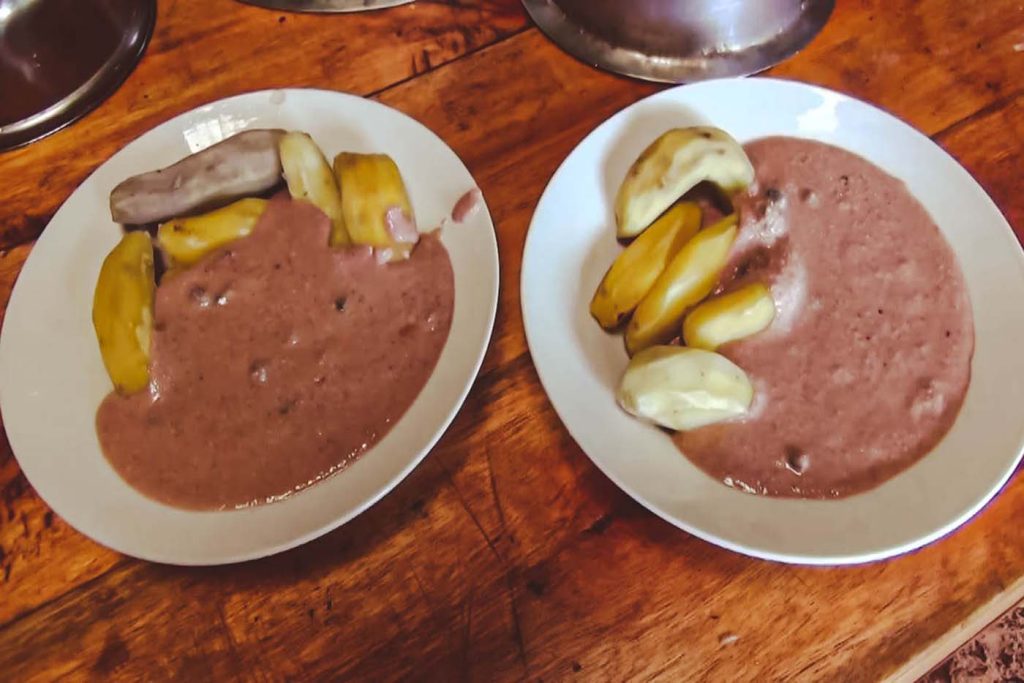
Lumonde (Sweet Potato) is a Ugandan traditional dish from the Busoga region, which is located in the eastern region of Uganda. This dish is made by steaming sweet potatoes wrapped in banana leaves, which gives it a unique and delicious flavor. It is usually served with groundnut sauce, which is made by grinding roasted groundnuts/peanuts and mixing them with other ingredients like onions, tomatoes, and spices.
20. Ugandan Chai Masala tea
As one of the Popular Traditional Foods in Uganda, Ugandan Chai Masala tea offers a unique blend of flavors that have become a super staple food in Uganda. Made with black tea leaves(Amajani), ginger(Tangawizi), Basil leaves(Omujaaja), lemongrass(Kisubi), cinnamon(Mdalasini), cloves and other spices, it shares similarities with the famous masala chai from India and neighboring countries.
The basic recipe requires only five ingredients – water, milk, black tea leaves, ginger, and sugar – yet the addition of aromatic spices creates a rich and invigorating beverage that is enjoyed by locals and visitors alike.
Wrapping up
Uganda’s cuisine is rich and diverse, with influences from different regions, tribes, and religions. The most popular traditional foods in Uganda include Posho/Ugali, Ugandan Rolex, Matooke, Groundnut stew, and Chapati. These dishes are simple but delicious and provide a good source of energy.
If you’re planning a trip to Uganda, make sure to try some of these dishes to experience the country’s unique and flavorful cuisine.




